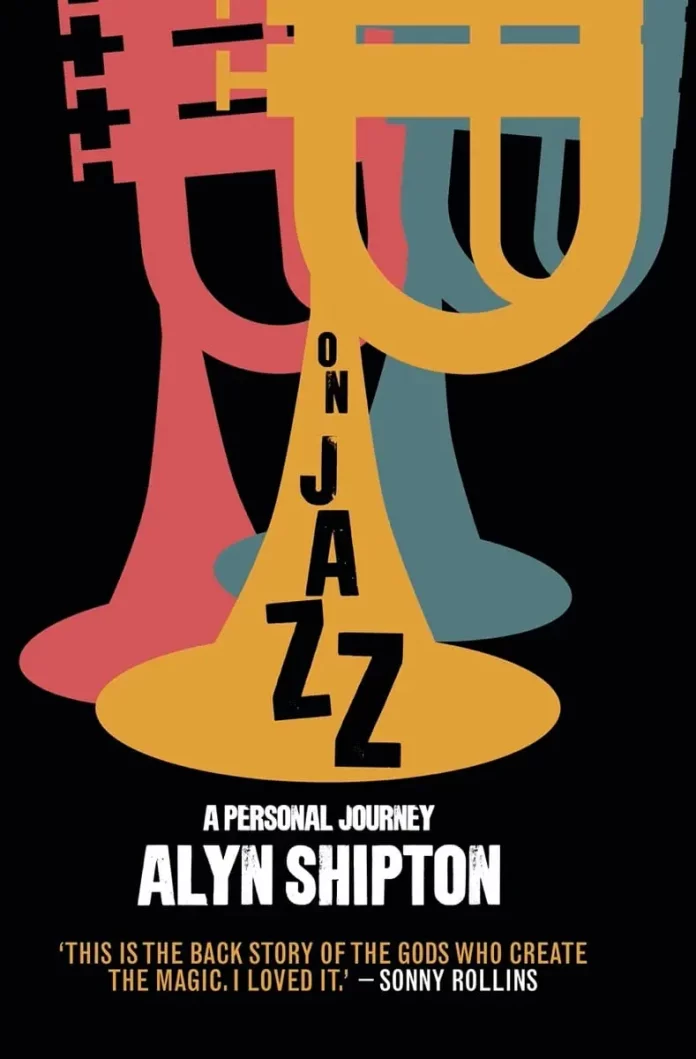This is a remarkable book. I don’t know how busy Alyn Shipton is these days, now he’s past the official age of retirement, but I suspect he’s as busy as ever. Fortunately for those who are interested in jazz it’s largely jazz which has kept him busy and here is amazingly extensive evidence of just some of what his activity has achieved.
The book starts in autobiographical vein with details of his early interest in jazz (while still at primary school) and his early gigs with his double bass (in his teens). We learn in the first chapter of his musical and personal relationship with Ken Colyer and a chronological digression briefly takes us forward to his work with Colyer from 1978 to 1986. (In subsequent chapters too the author often adopts a rewarding stream-of-consciouness manner when something suggests a digression which is followed to its conclusion before the main thread is picked up again.)
The second chapter brings us back to 1976 and the young Shipton’s first visit to New Orleans where one of the first musicians he heard and chatted with was Charlie Mingus ! This is an early reminder that, although it was New Orleans jazz which first captivated the young man, he eventually came to appreciate and enjoy the entire spectrum of jazz development – as the concentration on Ornette Coleman in the penultimate chapter makes very clear. It’s also an early example of the pleasure the author has always taken in talking to musicians, getting to know them, whether through casual conversation or formal interview, and recording what they have to say. (I haven’t counted the number of musicians whose words appear in this book but I wouldn’t be surprised if it’s around a hundred.)
The next two chapters also relate to New Orleans, with some concentration on Dr. John and Blue Lu Barker (the vocalist wife of Danny). Then the author gets to know Buck Clayton, who suggests he should write a book on Fats Waller. On this subject Harry Dial, Al Casey and Franz Jackson all have plenty to say and Jabbo Smith remembers recording with Fats at the organ back in 1928. A chapter on Louis Armstrong brings in reminiscences from Lawrence Lucie, Arvell Shaw and Jewel Brown and two more on Basie and Ellington have illuminating input from at least a dozen men including Buddy Tate, Eddie Durham, Clark Terry, Jimmy Woode and Louie Bellson. The author also has his own comments to make and argues fairly convincingly that Ellington’s supposed decline in the early 50s has been unfairly exaggerated.
Moving on stylistically there are chapters on Dizzy and Bird, the MJQ, McLean and Rollins, Roy Haynes and the Oscar Peterson trios, all with the expected verbal input from the protagonists themselves or those who were close to them. A chapter called The Dawn Of Fusion brings in a number of significant British musicians as well as Americans and A Taste Of Freedom is the chapter dominated by Ornette Coleman with Charlie Haden and Paul Bley also offering insights.
So far throughout the book the author has been a modest presence, only occasionally mentioning gigs he played and people he played with, though we get several images of him, bearded or otherwise, in the two dozen photographs. Otherwise his presence is unifying, informative, reflective and he is, of course, the guide whose occasional anecdotes enliven the journey of his title.
In his final chapter, which is as absorbing as any of the others, he returns to the autobiographical mode in which he began the book and we realise that beside his writing, editing, publishing, research and interviewing he has kept up his own musical activity and is particularly proud of the Buck Clayton Legacy band, which makes use of many of Buck’s own scores and manuscripts. I’ve read many books on jazz and this is one of the very best. Don’t miss it.
On Jazz – A Personal Journey by Alyn Shipton. Hardback; 261pp; photos 12pp; notes, bibliography, index 35pp. Cambridge University Press. ISBN 078-1-108-83423-0
















